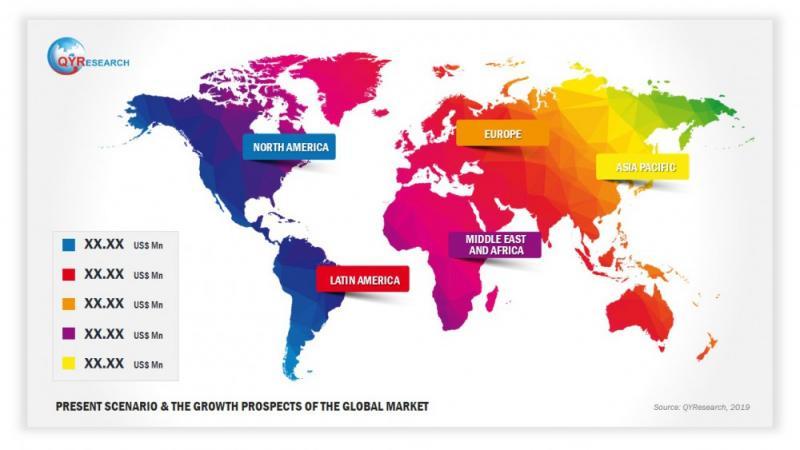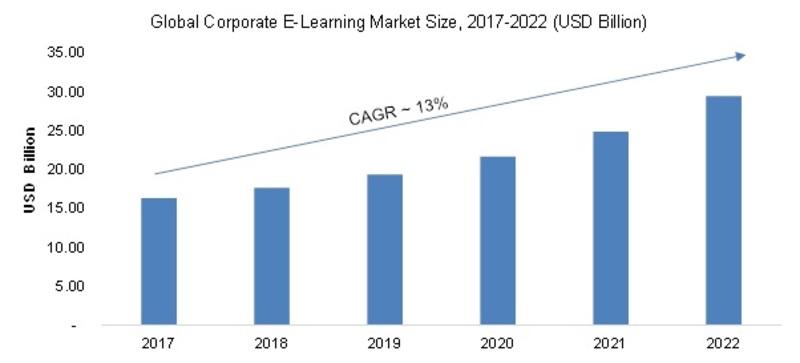Press release
Additive Manufacturing Market to Reach US$ 86.4 Billion by 2031
Introduction
Additive manufacturing, commonly known as 3D printing, is transforming industries by enabling the production of complex and customized components with precision and reduced material waste. This disruptive technology is increasingly being adopted across sectors such as aerospace, automotive, healthcare, and consumer goods. This report delves into the current state of the global additive manufacturing market, its future outlook, and the key trends shaping its growth.
The report provides an in-depth analysis of the market dynamics, technological innovations, sustainability initiatives, and regional market performance, offering valuable insights for stakeholders and decision-makers in the additive manufacturing ecosystem.
Market Projections and Forecast
According to the latest market study published by Persistence Market Research, the global additive manufacturing market is set to grow from US$ 20.9 billion in 2024 to US$ 86.4 billion by 2031, registering a compound annual growth rate (CAGR) of 22.4% during the forecast period. This remarkable growth can be attributed to technological advancements, increased demand for lightweight components, and the growing emphasis on sustainability and recycling within the manufacturing process.
Additive manufacturing's ability to create intricate designs, reduce lead times, and cut down on material waste has made it a preferred choice in industries such as aerospace, defense, automotive, and healthcare. As the technology matures, its adoption is expected to expand, contributing to the market's rapid growth.
Request a sample report@ https://www.persistencemarketresearch.com/samples/11254
Market Dynamics
Drivers of Market Growth
Advancements in Aerospace and Defense: The aerospace and defense sectors are at the forefront of additive manufacturing innovations. The need for lightweight, complex components that enhance fuel efficiency and performance has led to widespread adoption of 3D printing technologies. Additive manufacturing enables the creation of customized parts that are not feasible with traditional manufacturing techniques, making it invaluable in these industries.
Customization in Consumer Goods: Additive manufacturing allows for mass customization, enabling manufacturers to produce tailored products that meet individual consumer preferences. This has gained traction in industries such as fashion, footwear, and electronics, where personalized products are becoming increasingly popular. 3D printing facilitates the production of customized goods without the need for large-scale production runs, reducing costs and material usage.
Focus on Sustainability and Recycling: Sustainability is becoming a key focus in the additive manufacturing market. The ability to recycle materials and minimize waste during the manufacturing process is driving the adoption of 3D printing technologies. Additive manufacturing uses only the required amount of material to produce a part, significantly reducing waste compared to traditional subtractive manufacturing methods. This aligns with global efforts to reduce the environmental impact of industrial processes.
Increased Adoption in Healthcare: The healthcare industry is another major driver of the additive manufacturing market. The ability to create patient-specific medical devices, prosthetics, and implants through 3D printing is revolutionizing personalized medicine. Additive manufacturing also enables rapid prototyping and the production of complex medical devices, which improves patient outcomes and reduces costs.
Challenges in the Market
While the additive manufacturing market shows immense potential, it also faces several challenges:
High Initial Costs: The cost of acquiring and maintaining additive manufacturing equipment can be high, which may deter small and medium-sized enterprises (SMEs) from adopting the technology. Although the long-term benefits of reduced material usage and customization are significant, the upfront investment remains a barrier for some companies.
Material Limitations: Although additive manufacturing has made great strides in material compatibility, there are still limitations in terms of the range of materials that can be used. Metal 3D printing is particularly challenging, with issues related to material strength and durability compared to traditional metal manufacturing methods.
Post-Processing Requirements: In many cases, parts produced through additive manufacturing require post-processing to achieve the desired surface finish and mechanical properties. This adds time and cost to the manufacturing process, limiting its efficiency in high-volume production scenarios.
Market Trends and Technological Innovations
Several key trends and innovations are shaping the future of the additive manufacturing market:
Lightweight and Complex Components: One of the major advantages of additive manufacturing is its ability to create lightweight and complex components that are difficult or impossible to produce using traditional manufacturing methods. This is particularly important in industries such as aerospace and automotive, where reducing weight improves fuel efficiency and performance.
Hybrid Manufacturing: A growing trend in the additive manufacturing industry is the integration of 3D printing with traditional manufacturing techniques, known as hybrid manufacturing. This approach combines the benefits of both methods, enabling manufacturers to produce high-quality components with enhanced mechanical properties. Hybrid manufacturing is gaining traction in industries such as aerospace, automotive, and medical devices.
On-Demand Manufacturing: Additive manufacturing supports the concept of on-demand manufacturing, allowing companies to produce parts as needed, rather than maintaining large inventories. This reduces storage costs and ensures that manufacturers can respond quickly to changing customer demands. On-demand manufacturing is particularly useful in industries where spare parts and customized components are required.
Recycling and Sustainable Materials: The push for sustainability in the manufacturing sector is leading to innovations in material recycling and the development of eco-friendly materials for additive manufacturing. Companies are increasingly focusing on creating materials that can be reused or recycled, reducing the environmental impact of 3D printing. This trend aligns with global efforts to adopt circular economy practices and minimize industrial waste.
Additive Manufacturing Market Segmentation
By Technology
Stereolithography (SLA)
Selective Laser Sintering (SLS)
Fused Deposition Modeling (FDM)
Electron Beam Melting (EBM)
Direct Metal Laser Sintering (DMLS)
Others
By Application
Aerospace and Defense
Automotive
Healthcare
Consumer Goods
Industrial
Others
Regional Analysis
The additive manufacturing market shows significant regional variation, with North America and Europe leading the way in technology adoption and innovation.
North America
North America is the largest market for additive manufacturing, with the United States at the forefront of 3D printing technology development. The region's strong aerospace, defense, and healthcare industries are driving demand for advanced additive manufacturing solutions. In addition, government initiatives supporting research and development in 3D printing technologies are further propelling market growth.
Europe
Europe is another major market for additive manufacturing, with countries such as Germany, the United Kingdom, and France leading in innovation. The region's automotive and aerospace industries are key adopters of 3D printing technologies, and the focus on sustainability and recycling aligns with Europe's stringent environmental regulations. The European Union's emphasis on Industry 4.0 and smart manufacturing is also boosting the adoption of additive manufacturing technologies.
Asia-Pacific
The Asia-Pacific region is witnessing rapid growth in the additive manufacturing market, driven by the expanding automotive, electronics, and healthcare industries. Countries such as China, Japan, and South Korea are investing heavily in 3D printing technologies to enhance their manufacturing capabilities and reduce dependency on imports. The region's focus on industrial innovation and smart manufacturing is expected to drive further market expansion in the coming years.
Key Companies Profiled in the Report
Stratasys Ltd.
3D Systems Corporation
EOS GmbH
GE Additive
Materialise NV
SLM Solutions Group AG
HP Inc.
Renishaw plc
ExOne
Carbon, Inc.
Desktop Metal, Inc.
Future Outlook
The future of the additive manufacturing market looks bright, with continued advancements in technology, material science, and sustainability practices. The focus on lightweight and complex components, particularly in aerospace and automotive sectors, is expected to drive demand for 3D printing technologies. Additionally, the healthcare sector's growing adoption of personalized medical devices and implants will further boost market growth.
Sustainability will remain a central theme in the additive manufacturing market, with companies increasingly prioritizing the use of recycled and eco-friendly materials. The integration of AI and machine learning in 3D printing processes is expected to enhance efficiency and precision, leading to further innovations in product design and manufacturing.
Moreover, the rise of on-demand and distributed manufacturing models will enable companies to optimize their supply chains, reduce lead times, and respond quickly to customer needs. As additive manufacturing continues to evolve, its impact on industries such as aerospace, automotive, healthcare, and consumer goods will only grow stronger.
Conclusion
The additive manufacturing market is on a rapid growth trajectory, driven by technological innovations, sustainability initiatives, and the demand for lightweight, complex components. While challenges such as high initial costs and material limitations exist, the market's potential for innovation and expansion remains significant.
As industries increasingly adopt 3D printing technologies to enhance production efficiency, reduce waste, and meet evolving customer demands, the global additive manufacturing market is set to revolutionize the future of manufacturing. With a projected market value of US$ 86.4 billion by 2031, additive manufacturing is poised to play a crucial role in the next wave of industrial transformation.
Read More Trending "PMR Exclusive Article":
• https://www.linkedin.com/pulse/how-anime-market-booming-worldwide-chemical-material-insights-hub-oytjf/
• https://www.linkedin.com/pulse/why-asia-pacific-services-market-booming-2024-mlm6f/
• https://www.linkedin.com/pulse/global-demand-flocculants-coagulants-water-purification-n2m7f/
• https://www.linkedin.com/pulse/innovative-applications-radiation-shielding-bukgf/
• https://www.linkedin.com/pulse/future-innovations-vehicle-scanner-technology-pr-news-sync-rbref/
• https://www.linkedin.com/pulse/future-urban-air-mobility-its-impact-city-transportation-88zsf/
Contact Us:
Persistence Market Research
G04 Golden Mile House, Clayponds Lane
Brentford, London, TW8 0GU UK
USA Phone: +1 646-878-6329
UK Phone: +44 203-837-5656
Email: sales@persistencemarketresearch.com
Web: https://www.persistencemarketresearch.com
About Persistence Market Research:
At Persistence Market Research, we specialize in creating research studies that serve as strategic tools for driving business growth. Established as a proprietary firm in 2012, we have evolved into a registered company in England and Wales in 2023 under the name Persistence Research & Consultancy Services Ltd. With a solid foundation, we have completed over 3600 custom and syndicate market research projects, and delivered more than 2700 projects for other leading market research companies' clients.
Our approach combines traditional market research methods with modern tools to offer comprehensive research solutions. With a decade of experience, we pride ourselves on deriving actionable insights from data to help businesses stay ahead of the competition. Our client base spans multinational corporations, leading consulting firms, investment funds, and government departments. A significant portion of our sales comes from repeat clients, a testament to the value and trust we've built over the years.
Additive manufacturing, commonly known as 3D printing, is transforming industries by enabling the production of complex and customized components with precision and reduced material waste. This disruptive technology is increasingly being adopted across sectors such as aerospace, automotive, healthcare, and consumer goods. This report delves into the current state of the global additive manufacturing market, its future outlook, and the key trends shaping its growth.
The report provides an in-depth analysis of the market dynamics, technological innovations, sustainability initiatives, and regional market performance, offering valuable insights for stakeholders and decision-makers in the additive manufacturing ecosystem.
Market Projections and Forecast
According to the latest market study published by Persistence Market Research, the global additive manufacturing market is set to grow from US$ 20.9 billion in 2024 to US$ 86.4 billion by 2031, registering a compound annual growth rate (CAGR) of 22.4% during the forecast period. This remarkable growth can be attributed to technological advancements, increased demand for lightweight components, and the growing emphasis on sustainability and recycling within the manufacturing process.
Additive manufacturing's ability to create intricate designs, reduce lead times, and cut down on material waste has made it a preferred choice in industries such as aerospace, defense, automotive, and healthcare. As the technology matures, its adoption is expected to expand, contributing to the market's rapid growth.
Request a sample report@ https://www.persistencemarketresearch.com/samples/11254
Market Dynamics
Drivers of Market Growth
Advancements in Aerospace and Defense: The aerospace and defense sectors are at the forefront of additive manufacturing innovations. The need for lightweight, complex components that enhance fuel efficiency and performance has led to widespread adoption of 3D printing technologies. Additive manufacturing enables the creation of customized parts that are not feasible with traditional manufacturing techniques, making it invaluable in these industries.
Customization in Consumer Goods: Additive manufacturing allows for mass customization, enabling manufacturers to produce tailored products that meet individual consumer preferences. This has gained traction in industries such as fashion, footwear, and electronics, where personalized products are becoming increasingly popular. 3D printing facilitates the production of customized goods without the need for large-scale production runs, reducing costs and material usage.
Focus on Sustainability and Recycling: Sustainability is becoming a key focus in the additive manufacturing market. The ability to recycle materials and minimize waste during the manufacturing process is driving the adoption of 3D printing technologies. Additive manufacturing uses only the required amount of material to produce a part, significantly reducing waste compared to traditional subtractive manufacturing methods. This aligns with global efforts to reduce the environmental impact of industrial processes.
Increased Adoption in Healthcare: The healthcare industry is another major driver of the additive manufacturing market. The ability to create patient-specific medical devices, prosthetics, and implants through 3D printing is revolutionizing personalized medicine. Additive manufacturing also enables rapid prototyping and the production of complex medical devices, which improves patient outcomes and reduces costs.
Challenges in the Market
While the additive manufacturing market shows immense potential, it also faces several challenges:
High Initial Costs: The cost of acquiring and maintaining additive manufacturing equipment can be high, which may deter small and medium-sized enterprises (SMEs) from adopting the technology. Although the long-term benefits of reduced material usage and customization are significant, the upfront investment remains a barrier for some companies.
Material Limitations: Although additive manufacturing has made great strides in material compatibility, there are still limitations in terms of the range of materials that can be used. Metal 3D printing is particularly challenging, with issues related to material strength and durability compared to traditional metal manufacturing methods.
Post-Processing Requirements: In many cases, parts produced through additive manufacturing require post-processing to achieve the desired surface finish and mechanical properties. This adds time and cost to the manufacturing process, limiting its efficiency in high-volume production scenarios.
Market Trends and Technological Innovations
Several key trends and innovations are shaping the future of the additive manufacturing market:
Lightweight and Complex Components: One of the major advantages of additive manufacturing is its ability to create lightweight and complex components that are difficult or impossible to produce using traditional manufacturing methods. This is particularly important in industries such as aerospace and automotive, where reducing weight improves fuel efficiency and performance.
Hybrid Manufacturing: A growing trend in the additive manufacturing industry is the integration of 3D printing with traditional manufacturing techniques, known as hybrid manufacturing. This approach combines the benefits of both methods, enabling manufacturers to produce high-quality components with enhanced mechanical properties. Hybrid manufacturing is gaining traction in industries such as aerospace, automotive, and medical devices.
On-Demand Manufacturing: Additive manufacturing supports the concept of on-demand manufacturing, allowing companies to produce parts as needed, rather than maintaining large inventories. This reduces storage costs and ensures that manufacturers can respond quickly to changing customer demands. On-demand manufacturing is particularly useful in industries where spare parts and customized components are required.
Recycling and Sustainable Materials: The push for sustainability in the manufacturing sector is leading to innovations in material recycling and the development of eco-friendly materials for additive manufacturing. Companies are increasingly focusing on creating materials that can be reused or recycled, reducing the environmental impact of 3D printing. This trend aligns with global efforts to adopt circular economy practices and minimize industrial waste.
Additive Manufacturing Market Segmentation
By Technology
Stereolithography (SLA)
Selective Laser Sintering (SLS)
Fused Deposition Modeling (FDM)
Electron Beam Melting (EBM)
Direct Metal Laser Sintering (DMLS)
Others
By Application
Aerospace and Defense
Automotive
Healthcare
Consumer Goods
Industrial
Others
Regional Analysis
The additive manufacturing market shows significant regional variation, with North America and Europe leading the way in technology adoption and innovation.
North America
North America is the largest market for additive manufacturing, with the United States at the forefront of 3D printing technology development. The region's strong aerospace, defense, and healthcare industries are driving demand for advanced additive manufacturing solutions. In addition, government initiatives supporting research and development in 3D printing technologies are further propelling market growth.
Europe
Europe is another major market for additive manufacturing, with countries such as Germany, the United Kingdom, and France leading in innovation. The region's automotive and aerospace industries are key adopters of 3D printing technologies, and the focus on sustainability and recycling aligns with Europe's stringent environmental regulations. The European Union's emphasis on Industry 4.0 and smart manufacturing is also boosting the adoption of additive manufacturing technologies.
Asia-Pacific
The Asia-Pacific region is witnessing rapid growth in the additive manufacturing market, driven by the expanding automotive, electronics, and healthcare industries. Countries such as China, Japan, and South Korea are investing heavily in 3D printing technologies to enhance their manufacturing capabilities and reduce dependency on imports. The region's focus on industrial innovation and smart manufacturing is expected to drive further market expansion in the coming years.
Key Companies Profiled in the Report
Stratasys Ltd.
3D Systems Corporation
EOS GmbH
GE Additive
Materialise NV
SLM Solutions Group AG
HP Inc.
Renishaw plc
ExOne
Carbon, Inc.
Desktop Metal, Inc.
Future Outlook
The future of the additive manufacturing market looks bright, with continued advancements in technology, material science, and sustainability practices. The focus on lightweight and complex components, particularly in aerospace and automotive sectors, is expected to drive demand for 3D printing technologies. Additionally, the healthcare sector's growing adoption of personalized medical devices and implants will further boost market growth.
Sustainability will remain a central theme in the additive manufacturing market, with companies increasingly prioritizing the use of recycled and eco-friendly materials. The integration of AI and machine learning in 3D printing processes is expected to enhance efficiency and precision, leading to further innovations in product design and manufacturing.
Moreover, the rise of on-demand and distributed manufacturing models will enable companies to optimize their supply chains, reduce lead times, and respond quickly to customer needs. As additive manufacturing continues to evolve, its impact on industries such as aerospace, automotive, healthcare, and consumer goods will only grow stronger.
Conclusion
The additive manufacturing market is on a rapid growth trajectory, driven by technological innovations, sustainability initiatives, and the demand for lightweight, complex components. While challenges such as high initial costs and material limitations exist, the market's potential for innovation and expansion remains significant.
As industries increasingly adopt 3D printing technologies to enhance production efficiency, reduce waste, and meet evolving customer demands, the global additive manufacturing market is set to revolutionize the future of manufacturing. With a projected market value of US$ 86.4 billion by 2031, additive manufacturing is poised to play a crucial role in the next wave of industrial transformation.
Read More Trending "PMR Exclusive Article":
• https://www.linkedin.com/pulse/how-anime-market-booming-worldwide-chemical-material-insights-hub-oytjf/
• https://www.linkedin.com/pulse/why-asia-pacific-services-market-booming-2024-mlm6f/
• https://www.linkedin.com/pulse/global-demand-flocculants-coagulants-water-purification-n2m7f/
• https://www.linkedin.com/pulse/innovative-applications-radiation-shielding-bukgf/
• https://www.linkedin.com/pulse/future-innovations-vehicle-scanner-technology-pr-news-sync-rbref/
• https://www.linkedin.com/pulse/future-urban-air-mobility-its-impact-city-transportation-88zsf/
Contact Us:
Persistence Market Research
G04 Golden Mile House, Clayponds Lane
Brentford, London, TW8 0GU UK
USA Phone: +1 646-878-6329
UK Phone: +44 203-837-5656
Email: sales@persistencemarketresearch.com
Web: https://www.persistencemarketresearch.com
About Persistence Market Research:
At Persistence Market Research, we specialize in creating research studies that serve as strategic tools for driving business growth. Established as a proprietary firm in 2012, we have evolved into a registered company in England and Wales in 2023 under the name Persistence Research & Consultancy Services Ltd. With a solid foundation, we have completed over 3600 custom and syndicate market research projects, and delivered more than 2700 projects for other leading market research companies' clients.
Our approach combines traditional market research methods with modern tools to offer comprehensive research solutions. With a decade of experience, we pride ourselves on deriving actionable insights from data to help businesses stay ahead of the competition. Our client base spans multinational corporations, leading consulting firms, investment funds, and government departments. A significant portion of our sales comes from repeat clients, a testament to the value and trust we've built over the years.
Permanent link to this press release:
Copy
Please set a link in the press area of your homepage
to this press release on woodPRI. woodPRI disclaims liability for any content contained in
this release.
Recommend

/newsMicroencapsulation Market Deep Analysis on Key Players - Dow Corning, Encapsys, Syngenta Crop Protection, Evonik Industries, 3M and Bayer
Market Study Report Adds Global Microencapsulation Market Size, Status and Forecast 2024 added to its database. The report provides key statistics on the current state of the industry and other analytical data to understand the market.
Extensive research is required for choosing the appropriate cor...

/newsGermany Airbag Market Size 2023: Global Share, Industry And Report Analysis By 2030 | Hyundai Mobis Co., Ltd. Key Safety Systems, Inc. Robert Bosch GmbH
Germany airbag market is expected to grow at a CAGR of around 6% during the forecast period. Germany Airbag Market research report refers to gathering and analyzing significant market data serve as best medium for various industry players to launch novel product or service. It is vital for key firms...

/newsSecurities Brokerages And Stock Exchanges Market Outlook 2021: Big Things are Happening
A new intelligence report released by HTF MI with title "Global Securities Brokerages And Stock Exchanges Market Survey & Outlook" is designed covering micro level of analysis by Insurers and key business segments, offerings and sales channels. The Global Securities Brokerages And Stock Exchange...

/newsRenewable Chemicals Market Emerging Trends and Competitive Landscape Forecast to 2028
The renewable chemicals market was valued at US$ 80,566.30 million in 2021 and is projected to reach US$ 1,76,750.76 million by 2028 it is expected to grow at a CAGR of 11.9% from 2021 to 2028. The research report focuses on the current market trends, opportunities, future potential of the market, a...

/newsHow Coronavirus is Impacting Cold Brew Coffee, Global Market Volume Analysis, Size, Share and Key Trends 2020-2026
"Market Latest Research Report 2020:
Los Angles United States, February 2020: The Cold Brew Coffee market has been garnering remarkable momentum in the recent years. The steadily escalating demand due to improving purchasing power is projected to bode well for the global market. QY Research's lates...

/newsCorporate E-Learning Market - Global Industry Size, Share, Key Players Analysis that are Infor, SkillSoft Corporation, Adrenna, CERTPOINT Systems and others with Regional Forecast to 2022
Overview:
E-Learning is used to enhance the learning procedures for newer job requirements and to make employees sound about the internal and external changes in the market and respective organizations. This method has created considerable differences in the ways of training and developing employee...
